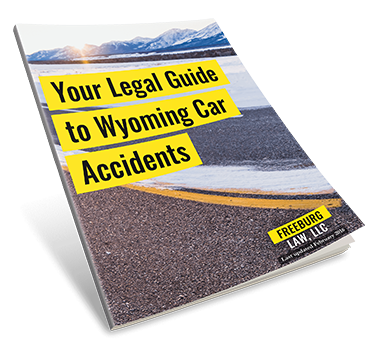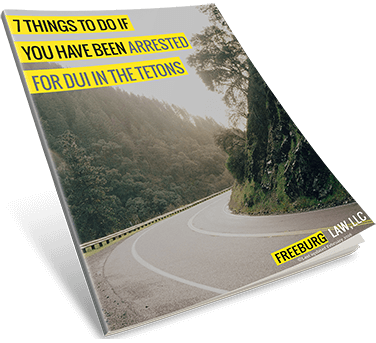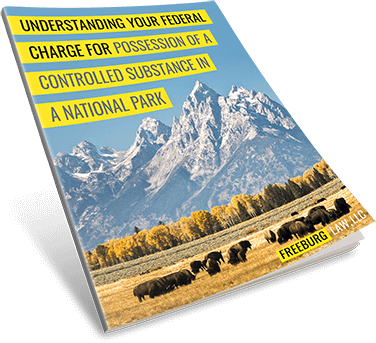VEHICLE ACCIDENT LITIGATION
Wyoming Car Accidents Your Legal Guide
Statutes of Limitations
Be aware that there is something called a statute of limitations. It is the time limit you have to file a case and the specific time limit depends on the claims and the law. In Wyoming, the applicable time limits may be one, two, or four years from the date of the accident. Your lawyer will be able to determine which statute of limitations applies to your specific case. Screwing up the statute of limitations is the fastest way to lose your case.
CHOOSING THE JURISDICTION
- Small Claims Court: No lawyers needed. The maximum amount of money you can claim is $6,000. You go to court “Judge Judy style” and finish everything in two or three hours. If you have a fender bender and no injuries, this is an option. I do not do these cases.
- Circuit Court: Typically, this is in the county where the accident happened or the county where the other party (the defendant) lives. The maximum amount of money you can obtain is $50,000. The cases are supposed to be done in seven months with minimal expert witnesses, a jury of six, and much less discovery. Car accident cases are rarely filed in Circuit Court but it may make sense depending on the facts.
- District Court: This Court is also likely in the County where the accident occurred or where the defendant lives. The court has general jurisdiction, meaning it can hear cases that are worth any amount of money, so long as a minimum of $50,000 in damages is claimed at the outset. The parties may request a six-person or 12-person jury and the jurors generally will come from the same community where the accident occurred. They may know the parties and will likely know the road where it happened. If I have a case in a county for the first time, I will find a local attorney and get background on the judge. The majority of car accident cases are filed in district court.
- Federal Court: There are three federal judges in Wyoming and at least two magistrates that may possibly hear the case. There are a couple of ways to get into federal court. If there is a federal question involved, or the accident happened on federal land, you may be able to get into federal court. The other common way is if the parties are from different states and the amount of money claimed exceeds $75,000.
TYPES OF PERSONAL INJURY

Controlled substance offense.
Alex did a wonderful job!! My charges got dismissed- the best possible outcome for me. He got his work done and kept me informed along the way.
BELLA
What Comes Next
FILE COMPLAINT
The complaint is the legal document that starts your case. Your attorney will prepare the complaint, which will set forth the basic facts of the case and your claims against the other driver.
Along with the complaint, you will file a summons, which is the document that the sheriff or process server uses to show that the other person has received legal notice of the complaint. Typically, the defendant has 20 or 30 days to respond with either an answer to the complaint or a motion to dismiss the case. If they file a motion to dismiss, it will be up to your attorney to respond, telling the court why your case should not be thrown out.
SCHEDULING CONFERENCE
In most jurisdictions, after the other side responds to the complaint, the court will hold a scheduling conference. You will not necessarily be at the scheduling conference. The purpose of the scheduling conference is for the court to set deadlines in the case. In complicated cases where there are a lot of medical experts and issues to understand, the court may set lengthy deadlines. In other cases, such as those in Circuit Court or cases that are relatively simple, the court may set shorter deadlines.
Typically, a court will give parties three to nine months to complete discovery or investigate the case. The court then sets a pretrial conference and some other deadlines, most of which are for your attorney to worry about. Sometimes factors such as an attorney’s schedule or the judge’s schedule– both personal and professional– can affect the length of deadlines. For example, if the judge has a lengthy trial coming up or the other attorney has a medical issue, the judge may take that into account when scheduling your case. I do not want to make it sound as though any little thing can delay a case; most of the time everyone is working in good faith to do the best they can to get their job done. If one side wants too many delays or extensions, the judge will stop them and force them to participate in resolving the case. Most of the time in a simple motor vehicle accident case, both sides want to move efficiently.
DISCOVERY
The first phase in the case is called discovery. The purpose of discovery is to develop the facts in the case. Sometimes this means doing more investigation of the accident where an accident deconstructionist goes to the scene (in some cases, we will have taken care of this in the pre-filing investigation phase.) Sometimes this means asking the other side questions in writing, which they have to answer under oath. Sometimes this means taking the other driver’s deposition – an in-person interview where your attorney will ask that person questions under oath. It can also mean hiring experts to help explain the evidence in your case.
For example, a medical expert may review and explain your medical records in an easy-to-understand summary. You may also have an economist review your notes and records on expenses to quantify the financial impact. Another common expert is a life-care planner. This expert estimates and prices the future medical treatment you will need as a result of the accident.
Discovery begins with initial disclosures, which are things each party is required to tell the other side about its case. Each side has 30 days to complete their initial disclosures. These disclosures include a list of every person with knowledge of the accident, a list of the documents you have that are related to the accident, a computation of the damages (note: often times this is completed later in the process, but if it has been done, you are required to disclose it under certain circumstances), and any insurance agreement that is relevant to the claim. That means, if you have been injured and filed a claim, you should be able to see the other side’s insurance documents.
Written Discovery Requests: Each side has the right to ask the other side questions, require them to produce documents, and to admit to or deny statements. Your attorney will shape these discovery requests as they can be powerful tools to lock the other side into their version of events. Your attorney can require them to state in writing whether or not they think they are at fault or require them to produce emails and text messages (assuming there are not any privileges.) You can also ask them to admit or deny liability.
Depositions: Depositions are our opportunity to ask the other side questions under oath in an interview setting. Depositions do not happen in the courthouse but rather in a conference room with a court reporter and the other person’s attorney. You may also be deposed. Most folks have an idea of what a deposition is from TV. If you are going to be deposed, we will spend quite a bit of time preparing for the deposition ahead of time.
MOTIONS
JURY TRIAL
If you have never watched TV, go catch up on Law and Order, Better Call Saul, The Goodwife, or Damages. I joke because this short book is not the right place to crank through all the pieces of a jury trial. Know that a short trial is two to three days and a long trial is more than a week. If there are significant injuries or uncertain liability, you are more likely to have a long trial.
It is rare for any case to go to trial. If your case goes to trial, we will be spending a lot of time together. It almost always takes over a year from the filing of a case to get to trial.
Legal Guides
BY FREEBURG LAW

Your Legal Guide to Wyoming Car Accidents

7 Things To Do If You Have Been Arrested for DUI in the Tetons
